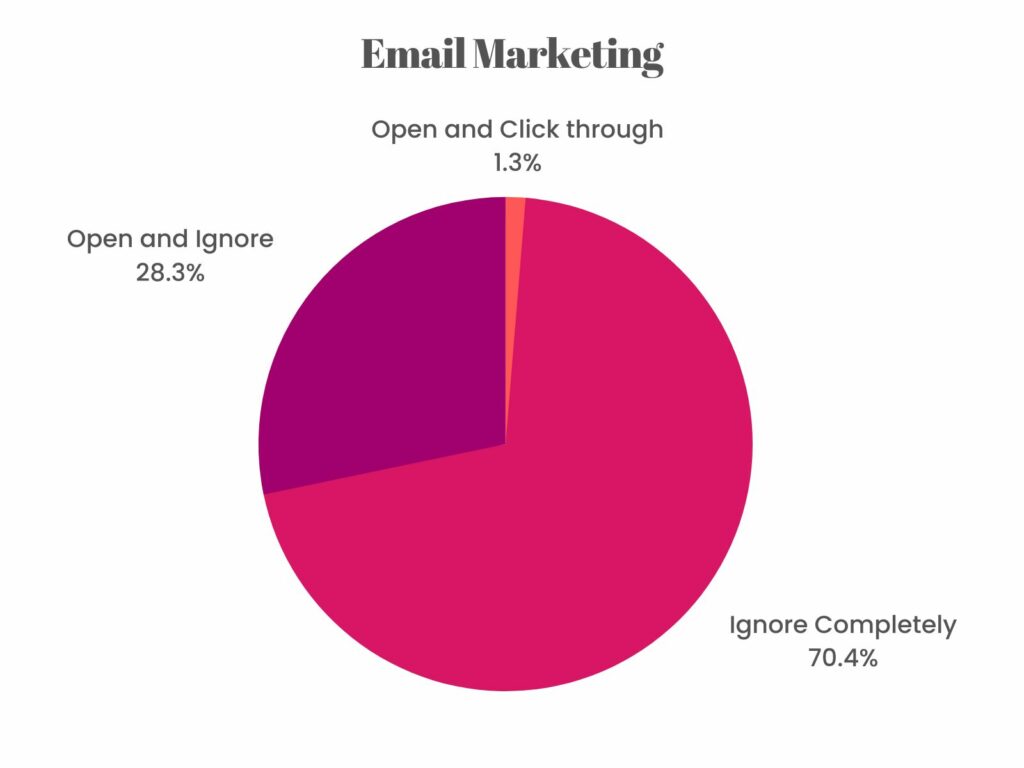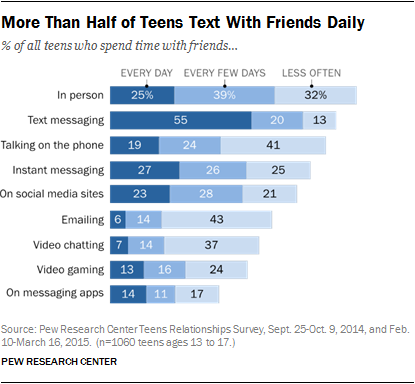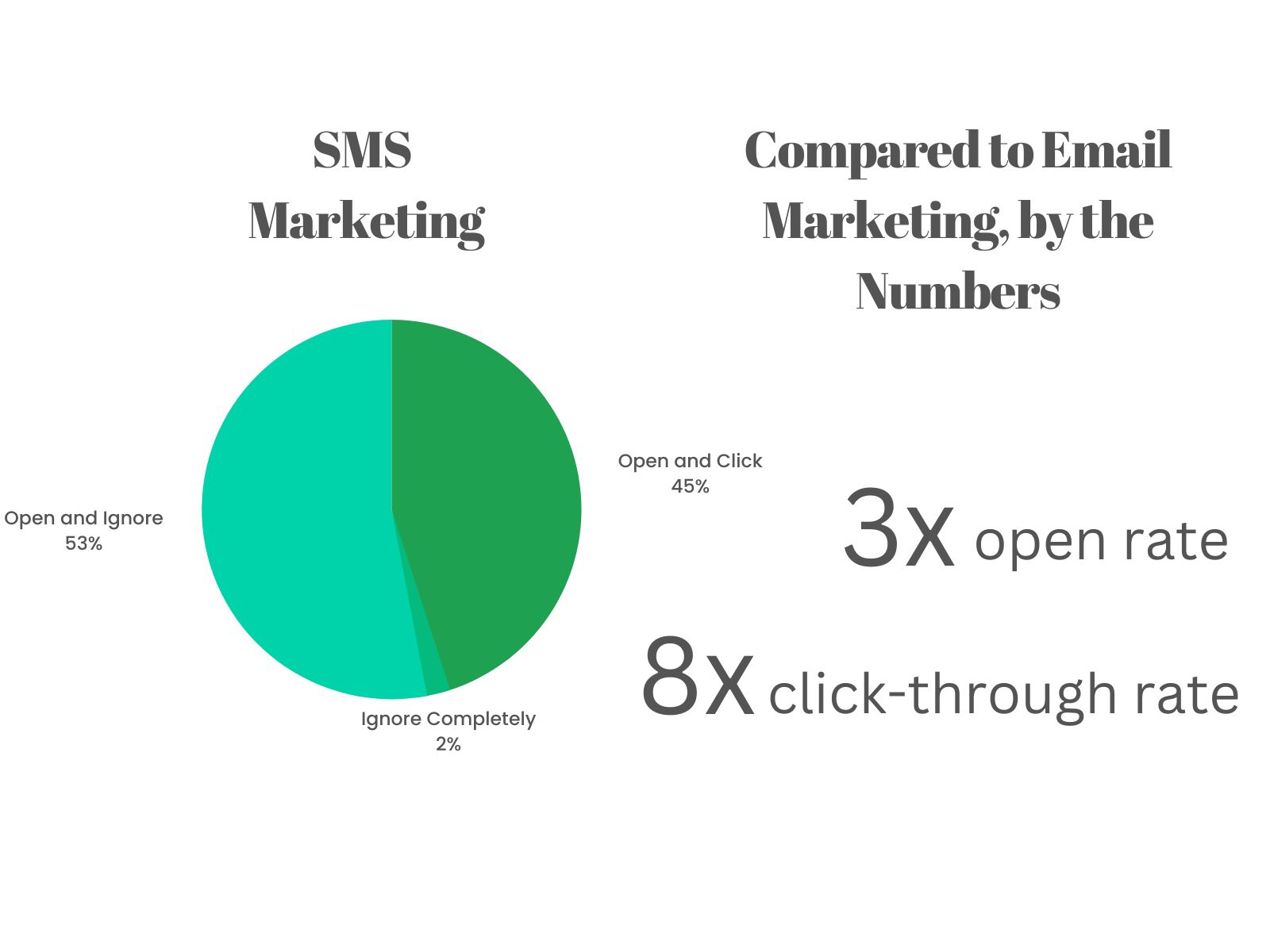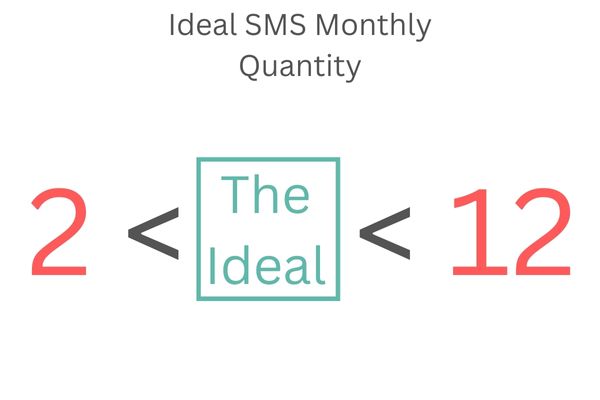Since SMS marketing is far more effective than the other options, you should make the effort to learn how to do it well, and make sure that you are using it in a compliant and well planned way.
Over All
In terms of marketing strategy, running an ad on TV, radio, or even the internet is kind of like hiring a blimp to drift through the sky at its snail’s pace. Email marketing is maybe like the Candy Bomber visiting an airshow and raining down sweet little packets on a more particular location. Neither of these strategies is ideal.
The blimp’s message may reach a broad audience, but shallowly, and is likely to be ignored by most people who might glance its way. The Bomer’s candy-filled parachutes are more likely to attract attention, but as they’re all the same and come in a flood, still aren’t likely to incite much action.
Imagine a third possibility, though. Imagine an expertly folded and flown paper airplane landing gently in your lap with a message just for you. If you got this, I bet you’d sit up straight and look around for who flew it to you. This is analogous to an expertly crafted SMS marketing campaign.
Benefits
You’ve got to give SMS marketing a try. Email marketing is likely your baseline marketing strategy, and it is good to have a baseline, but if you leave it there, you’ll be leaving a huge opportunity on the table. According to Smart Insights, a marketing-development company, across all industries the open-rate for email marketing messages is just under 30%.
So you pour your soul into a wonderful email message and more than two-thirds of your audience doesn’t even open it. And of the ones who do open it, only one in every twenty-five actually clicks through on your call to action.
 But you diligently send your promotions out every month anyhow, and you’ve figured out how to beat the industry averages, and by sheer perseverance and volume you’ve made email marketing a driver of sales for your business. Congratulations! If you’re having success, by all means keep it up! But add to that this new channel of SMS marketing, and your results will explode.
But you diligently send your promotions out every month anyhow, and you’ve figured out how to beat the industry averages, and by sheer perseverance and volume you’ve made email marketing a driver of sales for your business. Congratulations! If you’re having success, by all means keep it up! But add to that this new channel of SMS marketing, and your results will explode.
The Numbers
Before you balk at the prospect of adding another marketing vertical to your business, though, consider a few stats about SMS marketing. SMS messages have an open rate of 98%. It turns out nobody wants an unopened message cluttering up their phone whereas people may already have so many unread messages in their email inboxes that one more or less doesn’t make much of a difference.
I myself was lamenting the deplorable state of my own email inbox with its 7,000 unread messages at the Red Cross the other day waiting for my donation when my phlebotomist pulled out his phone and showed me that he has 40,000 unread emails! I bet neither of us has any unopened texts, though.
Yeah, you say, people read their text messages, but who actually wants to take action on anything on their phone? It turns out that a lot of people do. According to Gartner, a digital marketing guidance firm, response rates to SMS messages (like following the call to action link) are as high as 45%. That means people are 3 times more likely to open your message if it’s an SMS, and almost 8 times more likely to respond to it. We think it’s worth it to start using SMS messaging.
 Soft Benefits
Soft Benefits
But better open and response rates aren’t the only benefit of SMS messaging. Apart from the increased open and engagement rates, Shopify points out that communicating by SMS does a better job of strengthening customer relationships. This is no surprise, I suppose, when you think about it.
Email may have started out as a way to connect with others electronically, but it has since turned largely transactional. Only a few of the dozens of emails that flow into your box every day will likely lead to any sort of social response or connection. Text messaging, on the other hand, is the primary way many people connect with their friends these days. Seven years ago the Pew Center found that texting was the dominant way for teens to communicate with their friends. Seven years later those teens are now twenty-somethings that fit squarely into most ecommerce businesses’ prime audience!

~click for details about this graphic for the visually impaired~
The heading reads “More than Half of Teens Text With Friends Daily”. The graph compares a variety of communication styles, with 55% of teen respondents text messaging with their friends every day. Next highest for every day is instant messaging at 27%, and then in-person at 25%. Various other communication styles are listed: on social media sites (23%), talking on the phone (19%), on messaging apps (14%), video gaming (13%), video chatting (7%), and emailing (6%).
If you approach your customers through the medium of text messaging, then, it makes sense that they’ll start associating you with their friends in their minds. Thus, without even considering the content of your message, your texts will already give you that added boost. In point of fact, there are some significant considerations you should take into account when you compose your SMS campaign, but we’ll get into those in the Composition section below.
Another benefit to using SMS for marketing (and this one is shared by email marketing) is that it’s easy to set up and manage whenever you have time to do it. It’s even likely that your current email marketing provider already offers an SMS option, so you’ll just have to sign up for a different level of plan to access it. This is the case with two of our favorites: OmniSend and Klaviyo, both of which actually offer a limited number of SMS messages even on their free plans.
In some ways your SMS campaign may be even easier to set up than your email campaign. An email message can be lengthy and well designed, engaging, and full of images, which are all great things, but it does mean that composing the emails may take a substantial amount of time.
Text messages, on the other hand, are limited to 160 characters, and unless you want to send out a bunch of multiple-part messages (which we don’t recommend), you should stick to that character limits. More on that in the composition section as well.
SMS Marketing Regulations
Ready to get started with SMS marketing? Great! But before you do, let’s take some time to talk about regulations. SMS communications from businesses are regulated by the TCPA, the CAN-SPAM act if you’re in the United States, the CASL if you’re in Canada, and the GDPR if you’re in Europe. Overwhelmed yet? Honestly, the names of the standards are more difficult to wrap your mind around than the regulations they assert.
Chances are, if you’re using an SMS marketing service, they will already have many of the guardrails in place to make sure you’re complying with the laws, but just in case they don’t, I’ll go over a few things here.
Consent
The first thing you need to do before even embarking on your SMS campaign is to get consent from the one you’d like to market to. Legally, this consent needs to be explicit and (preferably) in writing before you ever send an SMS message out. This means you can’t just upload the telephone numbers of all your buddies and start sending them offers for your longboard wax, no matter how much you know they need it and will appreciate it.
Instead, you’ll need them to give you consent, which includes several important factors. The most important of these factors that need to be included in your consent statement, are these:
- Your company name
- purpose for messages
- frequency of messages
- that fees may apply
- how to unsubscribe
- policies (privacy and terms of service)
If you include all of these in a form on your website, and get your users to click on the consent checkbox, you’ve pretty much met the explicit consent requirement. Again, if you’re using an SMS marketing platform, it will almost certainly come with its own consent agreement that you can (or may be required to) use. If this is the case, you can mostly rest assured that your ducks will be in line in this regard.
Example Consent slightly modified from Klaviyo
By submitting this form and signing up via text, you consent to receive marketing text messages (such as promotion codes and cart reminders) from [Company name] at the number provided, including messages sent by autodialer. Consent is not a condition of any purchase. Message and data rates may apply. Message frequencies vary, but they are intended to go out up to a few times a week. You can unsubscribe at any time by replying STOP or clicking the unsubscribe link (where available) in one of our messages. View our Privacy Policy [insert privacy policy link] and Terms of Service [insert terms of service link].
Double opt-in
Beyond the preliminary consent, we’d recommend going for a double opt-in process. This is a great way to just confirm that your customers know what they’re getting into, and eliminate disgruntled customers who didn’t realize what they were doing. It also gets rid of any submissions by bots who see your form and sign fake numbers up just because being annoying like that is what bots do.
Since a false telephone number that a bot submitted can never opt in, it’s one less number you’re marketing to, and one less text you’ll be sending out. This is good since you typically pay by the text, or at least have a certain quantity of texts that you can send out based on your plan size. No sense sending out texts to numbers that don’t even exist!
After people sign up (or opt in, if you choose to go that route), you should send them a confirmation letting them know that they have opted in. According to CITA.org, the opt-in confirmation should include several things:
- the program name or product description;
- customer care contact information (e.g., a toll-free number, 10-digit telephone number, or HELP command instructions);
- how to opt-out;
- a disclosure that the messages are recurring and the frequency of the messaging; and
- clear and conspicuous language about any associated fees or charges and how those charges will be billed
Example Confirmation Text
You signed up for recurring messages from [Company]. Text HELP for customer service, INFO for policy links, STOP to unsubscribe. Regular messaging fees apply.
You can have most of this information appear only in the confirmation text, but something that you should include in every message you send out is the method for unsubscribing from SMS marketing. Since this is included in pretty much everyone’s SMS campaigns, you can make the message very basic so it doesn’t waste precious characters. I like the simple, “text STOP to leave”. Simple, and only eighteen characters, leaving you with 142 for the bulk of your message.
Composition
When folding your paper airplanes (actually composing the SMS campaign messages), there are a few things you should keep in mind if you want them to fly straight. Go about the process of creating your strategy for SMS marketing deliberately and in consideration of these important factors and your messages will soar:
Timing
The first consideration is the timing of messages. You should set them to go out during business hours. Getting a text message notification while drifting off to sleep at night can make anyone feel less warm and fuzzy about your company, no matter how well composed your text is.
Your SMS marketing provider likely has a way for you to either set the time messages should go out, or the time span during which they shouldn’t go out. In most cases these will be linked to the geolocation of the area codes of your contacts, so as long as you have them send during business hours, or block out the time outside of business hours, you should be fine.
Quantity
Next, you should probably limit your communication via SMS to several times a month. Postscript.io suggests that 2–6 texts a month is probably a good starting range. With too many texts a month you may weary your prospects out, and with too few they may forget about you entirely so you won’t benefit from the gradual deepening of the relationship that SMS offers. In fact, uplandsoftware suggests that 10-12 texts a month is the upper limit, so you can experiment up to about that range.
 Content
Content
Finally, let’s talk about the actual messages you should send, their tone and content. It’s best to stick within the 160 characters, which includes the opt-out instructions, so it’s pith you’re going for here rather than expansiveness. I’d say it’s okay to use standard text acronyms – “thx”, “btw”, “fwiw”, etc, to shorten your content, but don’t go overboard with it as not everyone will know all the acronyms. IYKYK, but not everyone will know…
You’re aiming for a friendly tone, about friendly topics. It’s okay to send promotions, but this shouldn’t be the only thing you use SMS messages for, or even the primary thing. You can ask about a recent purchase, request a review (as we mentioned in Big Picture 3), or highlight a feature of a product (think, “Did you know that our shoes are 30% lighter than the competition? lighter shoes = less fatigue + longer runs! more at bit.ly/3DLgu9F. text STOP to leave”).
The point is to be friendly, energetic, and engaging. By doing this you’ll deepen your relationship with your contacts, which will heighten their response to any promotions you do send their way.
Conclusion
By all means, keep up your email campaigns. Everyone loves the Candy Bomber. And go ahead and hire those blimps when you want to attract the gaze of a broader audience. But if you want to have the greatest effect on your most intimate audience, craft your SMS paper airplane messages and fly them straight to your subscribers. Land them on their laps—deliver them to their phones where they’re sure to look at them—and then watch as your marketing efforts take off. Just make sure you fold precisely by following all the rules required for your SMS marketing to adhere to the regulations. Also follow our tips on the timing, quantity, and content of your messages, and your SMS marketing will land with perfection.


 Soft Benefits
Soft Benefits Content
Content